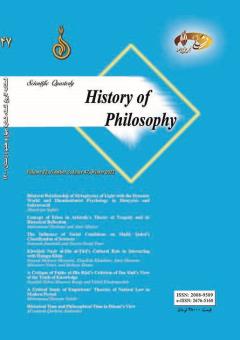Khwājah Naṣīr al-Dīn al-Ṭūsī’s Cultural Role in Interacting with Hulagu Khān
Subject Areas : Connection of philosophers’ views and philosophical schools with the social and philosophical conditions of the time
Seyyed Mohsen Hosseini
1
![]() ,
Einullah khademi
2
,
Amirhosein Mansori Noori
3
,
mohsen shams
4
,
Einullah khademi
2
,
Amirhosein Mansori Noori
3
,
mohsen shams
4
1 - PhD candidate at Shahid Rajaee Teacher Training University, Tehran, Iran
2 - Professor at Shahid Rajaee Teacher Training University, Tehran, Iran
3 - PhD candidate at Shahid Rajaee Teacher Training University, Tehran, Iran
4 - PhD, Shahid Rajaee Teacher Training University, Tehran, Iran
Keywords: Khwājah Naṣīr al-Dīn al-Ṭūsī, Hulagu Khān, cultural interaction, Imāmīyyah Kalām, Shi‘ite wisdom,
Abstract :
The present paper examines Khwajah Naṣīr al-Dīn al-Ṭūsī’s cultural role in interacting with Hulagu Khān and the other elements involved in this cultural agreement. It also aims to explain how, through a correct perception of the cultural features and symbols of the Mongol ethnic group, Ṭūsī managed to overcome them in a cultural battle. At the same time, he exploited the Mongols’ interest in astronomy, which was a part of their culture, and strengthen the Imāmīyyah kalām regarding its epistemological dimension and the status of Shi‘ism in the political structure of Hulagu Khān’s government. The presence of Khwājah Naṣīr al-Dīn al-Ṭūsī meant that Imāmīyyah Kalām had now a representative in the political structure of the time after many centuries, and even some Mongols became interested in Islam. With the downfall of the caliphate of Baghdad, whether Ṭūsī played a role there or not, one of the supporters of Ash‘arī kalām disappeared, and Imāmīyyah groups were revived.
